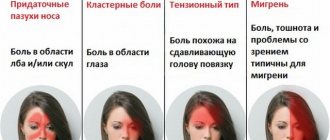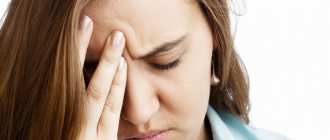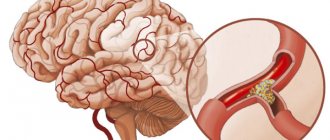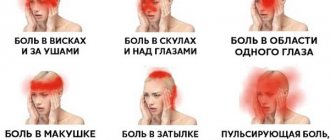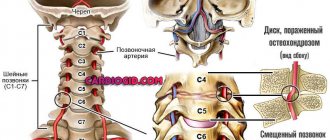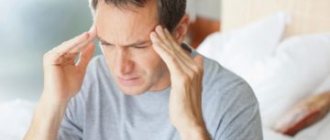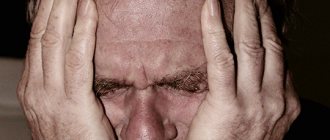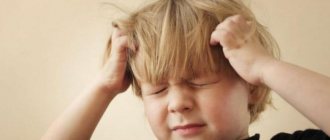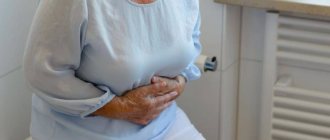Bardukova Elena Anatolyevna, neurologist, homeopath, 23 years of work experience ✔ Article verified by a doctor
Every person has experienced a headache at least once in their life. In general, there are more than 10 types of migraine in medical practice.
Migraines usually come unexpectedly and go away relatively quickly, especially after proper treatment and painkillers. If pain syndrome does not go away for a long time and is not associated with nervous tension, you should consult a doctor to determine an accurate diagnosis.
We will tell you about all types of headaches in pictures, give their exact names, symptoms and methods of treatment.
Bilateral headache
Symptoms : Daily headache on both sides of the head, as if it were being squeezed in a vice.
Bilateral pain
Possible cause : Migraine may be a consequence of stopping medication. If you have previously taken painkillers, your body may react in a similar way. Taking paracetamol or aspirin more than twice a week, or taking migraine tablets more than ten days in one month, may have negative health effects. The fact is that after stopping painkillers, pain receptors become even more sensitive. This explains the fact that when you stop taking medications, the pain syndrome returns with renewed vigor.
Pain may occur with high blood pressure or after a hypertensive crisis.
Treatment : If the pain in your head is too severe, talk to your doctor, it may be depression.
Most likely he will prescribe antidepressants.
Treatment of persistent headaches
Chronic cephalgia is an indication to see a doctor. First, you should visit a therapist, who will make a preliminary diagnosis and, if necessary, refer you to a doctor of a narrow specialization. Diagnosis of diseases that cause persistent headaches begins with an examination, medical history and general tests. Sometimes it is necessary to do a computed tomography, MRI, or apply approaches to assess the functioning of the vessels of the neck and head.
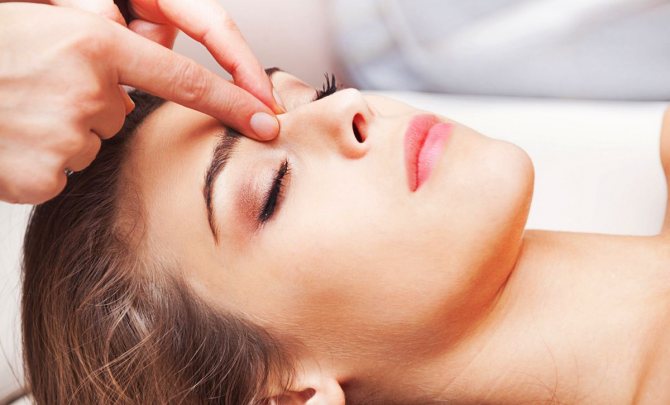
If you have a constant headache, treatment may be as follows:
- taking medications – you should not choose medications for headaches on your own; it is better to trust your doctor. Depending on the cause of the disease, the desired effect can be provided not by analgesics, but by antispasmodics, NSAIDs, antihypertensive or sedatives, nootropics, muscle relaxants and other medications;
- carrying out massage – treatment of the head or collar area can be carried out with the help of an assistant, a special device or on your own;
- the use of physiotherapeutic procedures - high or low temperatures, currents, magnetic waves can be used to combat headaches;
- surgical intervention - sometimes it is possible to get rid of headaches only after surgery (hematomas, tumors, vascular pathologies);
- reflexology – stimulating biologically active points with fingertips or needles allows you to quickly get rid of constant pain.
Patients who, due to the complexity of the situation, need to take medications on an ongoing basis, fear the development of side effects. Some of them are trying to replace pharmacy products with traditional medicine. This treatment option should be agreed with your doctor. Typically, natural medicines act as a complement to traditional approaches.
Headache of tension or tension type
Symptoms : pain is accompanied by a feeling that there is pressure on the head in the front or temples.
Possible cause : You often experience severe chronic stress or nervous tension.
Between 50 and 70% of all people suffer from this type of head pain every month.
This is the most common type of primary headache. The cause of headache is still unclear. One hypothesis is that teeth grinding at night may cause pain because the jaw muscles are constantly in motion. Uncomfortable posture is also a likely cause as it causes tension in the muscles of the head, neck and shoulders. This, in turn, negatively affects the nerve endings in the head. Also, tension-type pain can occur due to physical tension and general weakness.
Treatment : Clean air and painkillers will help achieve short-term improvement. Start doing yoga.
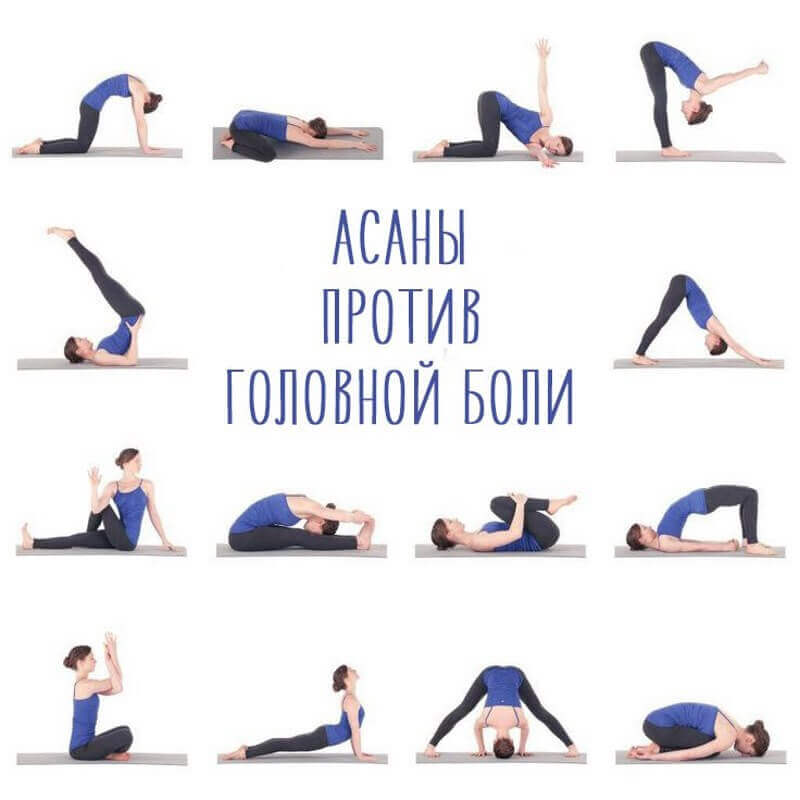
Yoga for headaches
According to a recent study, yoga can help relieve chronic headaches. A relaxing massage or hot tub will help reduce nerve and muscle contractions and tension.
If you have a headache, you should consult a therapist.
Situational reasons
Headache, like any other, has its own characteristics of manifestation. Recognizing pain allows you to make the correct diagnosis.
This type of pathology affects 6% of the population and is more common in women aged 15 to 35 years. And also during menopause.
It is difficult to meet a person who has not experienced a headache at least once in his life. Some people feel this unpleasant symptom almost constantly. Meanwhile, a headache can be a sign of a serious illness. Timely consultation with a doctor is the key to health. The specialist will be able to make a diagnosis based on the type of headache the patient is experiencing.
Acute attacks of headache may not necessarily be associated with disruption of normal brain function. Various infections, hypothermia or overwork can cause migraines. Pain in the temporal or occipital regions often appears due to stretching. Any type of headache requires attention from specialists if it has become permanent.
Quite often, osteochondrosis can cause the development of pain in the back of the head. At the same time, ordinary painkillers do not always help; the unpleasant sensations do not go away. The patient may complain of sleep disturbances. Regardless of what types of headaches the patient experiences, treatment should be aimed primarily at eliminating the causes of osteochondrosis.
Constant headaches impair a person’s performance. Some consider them a completely normal phenomenon and try not to pay attention at all.
This approach is wrong. What if you develop a serious illness? A healthy person should not have any pain.
Quite a few reasons provoke the appearance of unpleasant symptoms. What to do if you constantly have a headache? How to get rid of unpleasant sensations?
Migraine
Headache can be different: acute or chronic, throbbing or aching. However, whatever it is, discomfort in any case prevents a person from living a normal life. There are different types of headaches caused by different causes. Naturally, they need to be considered, since it is impossible to treat pathology without knowing its characteristics.
In adults, and also in some cases in children, the following types of pain can be distinguished:
- Tension or tension pain. They meet at least once in the life of every inhabitant of the planet. The reason for their development is considered to be nervous tension, severe emotional stress, overwork, and prolonged work at the computer.
- Migraine. It is quite difficult to accurately determine the reason for its appearance, although it is known for certain that mental and psychological factors should not be considered. Most often, such discomfort is associated with certain disorders of brain functionality: abnormal electrical activity, dilation of blood vessels. It occurs mainly in women, although it is sometimes diagnosed in children.
- Cluster headaches. This type of discomfort affects only 1% of the world's population. In most cases, men are affected. Experts still cannot name the exact reasons that cause this pathological condition.
- Hangover syndrome. There is only one reason for the pathology - too much alcohol, which provokes a strong dilation of blood vessels.
- Malignant or benign neoplasm on the brain. Any tumor, no matter what its size, puts pressure on the cerebral blood vessels. In addition, the patient's intracranial pressure increases, which causes pain.
- Bleeding. These types of headaches can be triggered by rupture of the walls of a blood vessel due to severe thinning, as well as traumatic brain injury.
- Temporal arteritis is an inflammatory lesion. The cause of this type of headache is considered to be a viral infection, an autoimmune reaction of the body, or taking excessive amounts of medications.
- Headache associated with the development of infectious processes in the body.
Headache can have different localization, character and intensity:
- Headache of vascular origin - the cause is compression, narrowing of the lumen of the blood vessels of the head, as well as their expansion.
Various factors can provoke this:
- Thrombi or emboli closing the lumen of small or large vessels.
- Atherosclerosis of blood vessels of the brain.
- Edema, swelling of the brain and membranes, blood vessels.
Throbbing headache
Symptoms : dull, throbbing, often one-sided headache, feeling of pressure in the head, red eyes, increased body temperature. Headache with strong internal throbbing.
A possible cause of a throbbing headache is inflamed paranasal sinuses. Paranasal sinus infections can occur as a result of viral or infectious diseases such as meningitis. This happens often when the weather turns cold. The pain becomes more complicated if there is sinusitis. Pain in the upper teeth is also possible.
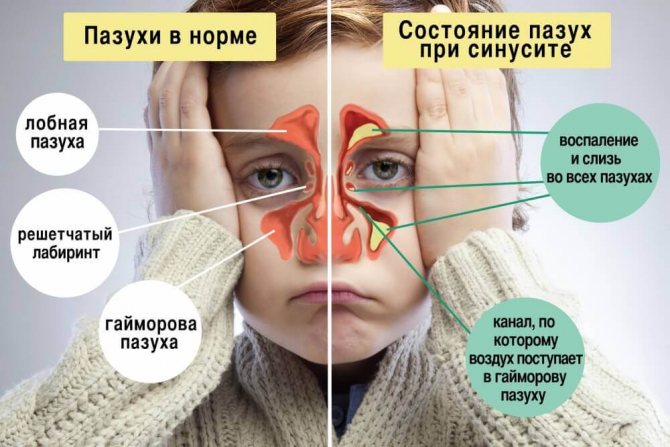
Inflamed paranasal sinuses
Treatment : Many sinus headaches go away on their own within a few days. The most common medications, which you may not even need, will help reduce pain and inflammatory pathology. If symptoms persist for more than 10 days, you may need to take antibiotics.
Indications and contraindications
The main indication for acupressure is when there is a headache. The procedure gives a pronounced result in an acute process, but in some cases it can cope with chronic, dull, obsessive cephalgia. Despite the safety of the approach, there are several conditions in which it will have to be abandoned.
Contraindications to acupressure for headaches:
- presence of tumors or suspicions of them;
- acute period of chronic processes;
- increased body temperature;
- pathologies of the heart and blood vessels, the period after a heart attack or stroke;
- decreased functionality of internal organs and systems;
- a history of mental disorders;
- acute and unexpected headache of unknown origin, which negatively affects the general condition of the body;
- age under 1 year and over 70 years;
- alcohol intoxication.
Women will have to give up acupressure in the second half of pregnancy. Stimulation of reflex zones during this period can cause premature birth. In the early stages, it is better to first consult a doctor on this issue so as not to harm the development of the fetus. During menstruation, manipulation should also be avoided if possible.
Headache due to fainting
Symptoms : pain and dizziness, sometimes accompanied by nausea and nervousness.
Possible Cause : People who drink coffee or caffeinated drinks may suffer from this type of migraine if they reduce their intake of such liquids. Caffeine is believed to affect the blood vessels in the brain as well as cerebral circulation, and the body goes into shock when caffeine levels drop sharply.
Treatment : Take no more than 300 milligrams of caffeine per day. This is approximately 2-3 cups of instant coffee. A mug of coffee contains about 50 milligrams of caffeine.
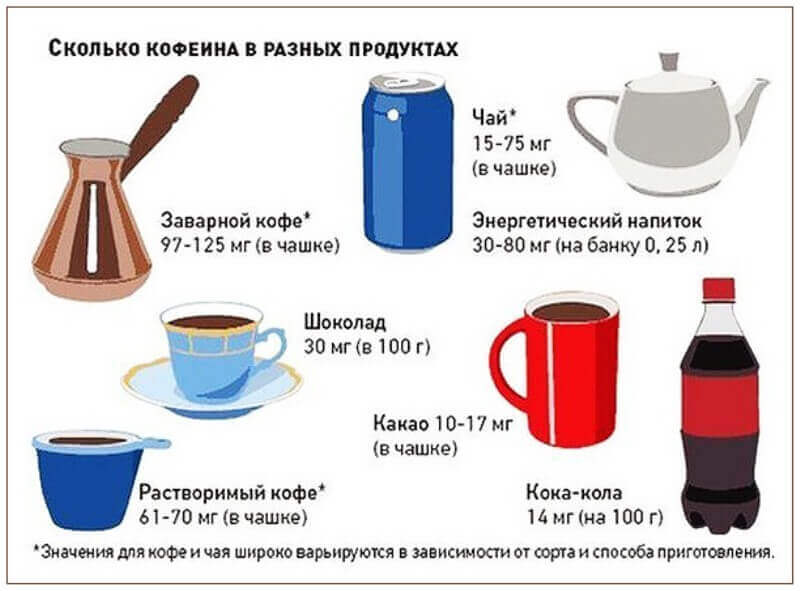
Amount of caffeine in different products
How to get rid of pain
Sometimes you can help yourself if the causes of the headache are not yet entirely clear. For example, a headache combined with a sore throat, nasal congestion, and pain in the eyes may indicate an approaching flu or cold.
You need to drink raspberry tea, put a cold compress on your forehead and take an aspirin tablet. In case of nervous fatigue or emotional stress, you should take a sleeping pill and an analgesic.
If you have a disease such as cervical osteochondrosis, then you should apply mustard plaster to the back of the head, perform a small self-massage of the neck and scalp, take a paracetamol tablet.
If your headache is very severe, it could be high blood pressure. Then you should take an antihypertensive drug. If the headache is caused by hypotension, then you need to drink a cup of strong coffee, but not tea, since tea does not raise blood pressure, but only tones the blood vessels. Just before doing anything, you need to measure your blood pressure.
For severe headaches, you can take propolis tincture. To do this, 20 grams of propolis should be poured with medical alcohol (100 ml). Wait until the substance dissolves completely. Now you can drip it onto a small cracker and eat it. 40 drops will be enough. After the procedure, you should lie down for a while.
A painful headache can be relieved with thyme. To do this, pour a glass of grass with 2 liters of water and cook for 10 minutes. Then wait until it cools completely, strain and pour into a bowl. In the evening, you should immerse your head in this solution for a couple of minutes and do this several times. Then pour the broth over completely.
Headache in the forehead and eyes
Symptoms : constant dull pain in the eyes and forehead.
Possible cause : Eye strain can cause asthenopia, which can trigger headaches. According to doctors, early diagnosis is very important as it will help avoid more severe consequences such as glaucoma or cancer. One of the main causes of chronic migraines can be that you don't wear glasses of the correct prescription, or don't wear them at all when you need them.
Photo of red eyes with asthenopia
Treatment : If you need to work in front of a computer, take short breaks every 20 minutes.
This will relax your eye muscles.
What to do if you have a headache: who to contact?
If you have had a headache for several years now, do not neglect your own health and put off visiting a specialist. You can contact a private neurologist with this problem: Mars Rafailevich Khusainov. For 20 years, he has been helping patients restore health and well-being, using only certified drugs and methods with proven effectiveness.
Headache in the back of the head, forehead, temples is a symptom that can and should be gotten rid of. However, it is not enough to simply take a pain reliever; it is important to eliminate the cause of the symptom in order to prevent relapse and more severe complications.
By turning to a private neurologist in Kazan for help, you receive qualified assistance with a home visit at any time of the day and at an affordable price compared to competitors. It is enough to contact a specialist by phone to receive detailed recommendations and arrange a home visit.
Very severe headache
Symptoms : Excruciating pain accompanied by special sensitivity to light.
Possible cause : Migraines affect about 15% of people worldwide. The fact is that some people are more likely to develop migraines due to factors such as diet, temperature changes or artificial light. It is believed that severe pain occurs due to trigeminal neuralgia. It can last for several days if left untreated.
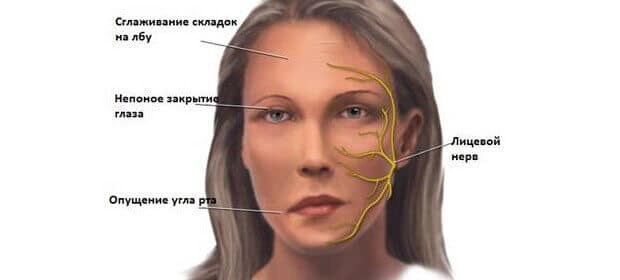
Trigeminal neuralgia
Treatment : Lie down in a dark and quiet room, this will calm the nervous system. Ask your doctor about medications that may help relieve your symptoms next time. According to a recent study, 40 minutes of exercise three times a week can help reduce this pain.
Effective prevention of migraines:
- regular diet;
- reducing the use of caffeine and painkillers;
- limiting physical exercise (especially on hot days);
- regular sleep schedule.
Headache when tilting head
Symptoms : pain when tilting or turning the head to the left or right
Possible Cause : When you don't take in enough fluids, the levels of chlorine, sodium and potassium in your body decrease and dehydration occurs . Experts say dehydration causes blood vessels to narrow, making it difficult for blood and oxygen to reach the brain.
Treatment : Drink plenty of water—six to eight glasses a day. Don't wait until you feel thirsty.
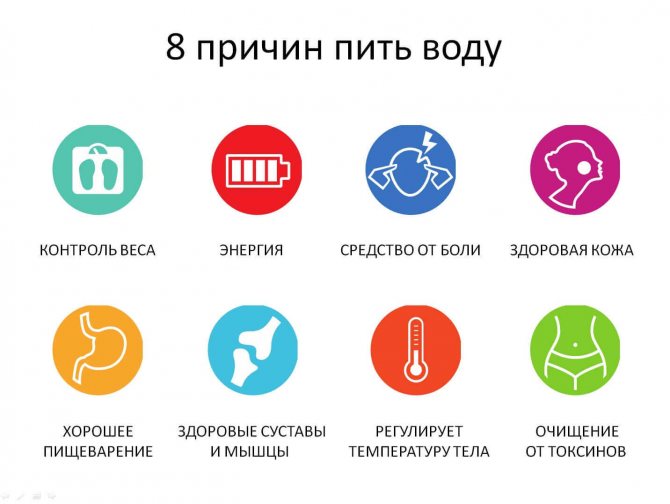
Reasons to drink water
Monthly headache
Symptoms : throbbing headache once a month
Possible cause : Women often suffer from headaches during the menstrual period, as well as during PMS, when estrogen levels in the blood are very low. The pain may be accompanied by nausea, vomiting, and special sensitivity to light or sound. Women who go through menopause are more likely to experience migraines as their body's estrogen levels decrease.
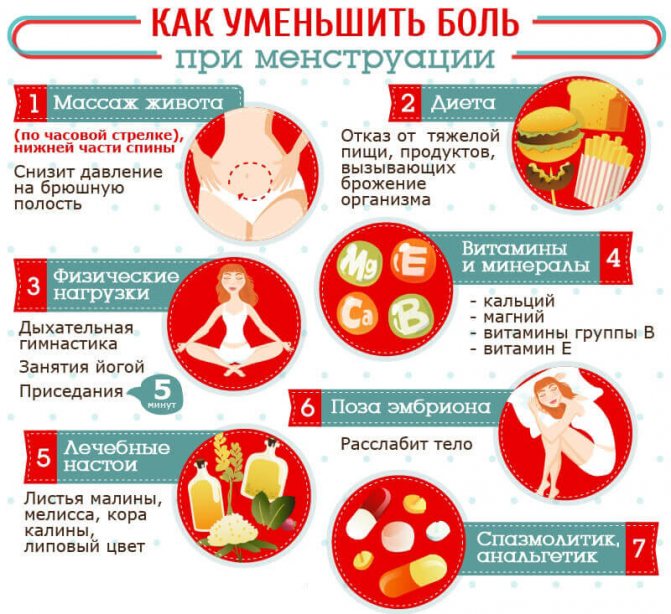
How to reduce pain during menstruation
Treatment : Try alternative therapy such as traditional medicine. You can also treat the sore area by applying ice for 15 minutes every hour.
Headache during orgasm
Symptoms : Pulsating and piercing pain within a few seconds after orgasm.
Possible Cause : No one knows for sure why some people experience severe headaches when they have an orgasm. Most likely, this is due to changes in the chemical composition of the blood. This type of migraine occurs more often in women than in men. This most likely occurs due to a sharp increase in male hormone levels. The pain can last from a few minutes to several hours.
Treatment : Consult a doctor. Taking painkillers may also help.
Headache caused by perfume
Symptoms : sharp throbbing pain after using perfume or air freshener.
Possible cause : Many fragrances contain chemicals that trigger migraines in sensitive people. Research has shown that some common materials in perfumes affect blood circulation in the brain, causing the sensation of pain. An interesting fact is that natural ingredients such as cinnamon and cloves can also cause pain.
Effective treatment : choose perfumes with a more natural composition.
Hangover headache
Symptoms . The first symptoms of alcohol intoxication are quite unpleasant for most people. High concentrations of alcohol in the blood can cause hiccups, dizziness, confusion, lethargy, vomiting, nausea, coma and even death. The effects on other body systems with symptoms of alcohol intoxication are also important. The work of the kidneys significantly increases urination, which leads to dehydration. Blood vessels in the brain dilate, causing the face to flush and the heart rate to increase. The liver begins to work harder to cleanse the blood of ethanol and acetaldehyde.
Frequent drinking of alcohol can lead to the formation of cancer in the liver, also known as cirrhosis. The lining of the stomach may become irritated, increasing nausea and the likelihood of bleeding. The extra calories often turn into fat.
Causes . Drinking alcohol negatively affects the brain, liver, kidneys, heart, blood vessels, stomach and nervous system of the body. The word drunk itself indicates the true nature of alcohol - it is toxic poisoning.
No one knows exactly how ethanol (ethyl alcohol) causes its various effects, but once it is absorbed into the bloodstream, it travels seamlessly into the nerve cells of the brain. When it gets there, it triggers the release of chemicals that produce pleasurable sensations and reduce inhibition, suppressing brain function. As more ethanol molecules penetrate the membranes of nerve cells, sedative effects develop.
The effects of alcohol intoxication are predictable based on measured blood alcohol levels. Some of these effects are caused by ethanol itself, others by an even more toxic byproduct of its metabolism called acetaldehyde. This substance accumulates in the blood when the liver breaks down alcohol into a form that is excreted from the body.
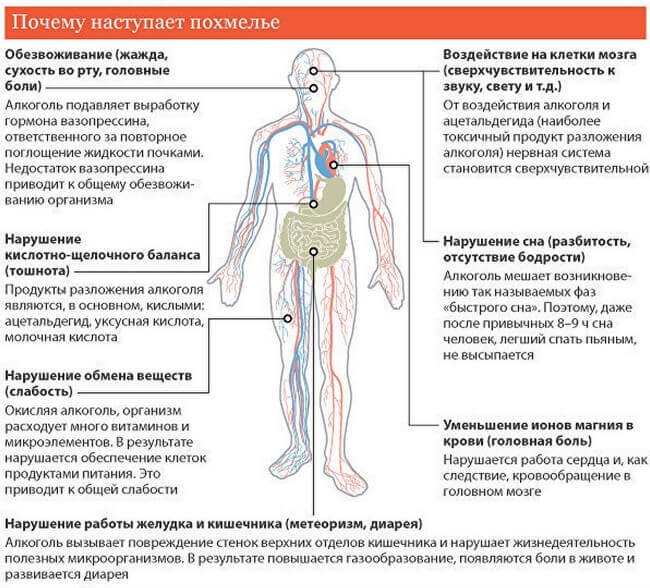
Causes of headache after drinking alcohol
Treatment . A hangover lasts up to 72 hours after drinking, but it usually goes away faster. It depends on how much you drank, what you snacked on, gender, liver condition, whether you were taking medications, etc. There is evidence that vitamin B6 taken before drinking alcohol can be quite beneficial. An anti-inflammatory drug called tolfenamic acid taken while drinking alcohol may have some effect.
It is likely that similar anti-inflammatory drugs such as Ibuprofen, Naproxen and other NSAIDs may be helpful. However, when combined with alcohol, they may increase the risk of stomach bleeding. What's the best hangover cure? Don't drink. And what else? Just wait until your body gets rid of toxins on its own.
Treatment
Migraine, the main type of primary headache, is not completely cured. But you can reduce the symptoms. Triptans are prescribed for this purpose. Also, people diagnosed with migraine need to be aware of the likelihood of a migraine stroke. To avoid it, you need to monitor your condition during migraine attacks. If they last more than three days, you should immediately consult a doctor.
All types of headaches require immediate medical intervention, since the cause of their occurrence may be a violation of the integrity of bone or brain tissue, a developing infection, or a critical level of blood pressure.
After making a diagnosis, the doctor carries out therapy: cluster pain is difficult to treat and is not always eliminated with the help of painkillers.
Brain tumors require craniotomy, biopsy of material (taking a small piece of tissue) to determine the nature of the tumor - whether it is benign or malignant. The patient is offered chemotherapy, surgery, taking into account the degree of pain - narcotic analgesics are prescribed, vital signs are monitored - blood pressure, pulse, consciousness.
Hypertensive crisis, which entails the development of pulsating pain in the frontal and temporal zones, is eliminated with the help of antihypertensive drugs. By normalizing blood pressure, you can improve the patient's well-being.
Treatment should be primarily carried out by a neurologist. The success of therapy and the likelihood of a final cure will depend on his competence and the degree of openness of the patient.
In any case, treatment should be long-term. Approximately 4-6 months.
And if the clinical picture includes depression or other mental disorders or disorders of a different nature, then the duration of therapy can last up to a year. If treatment is interrupted, the likelihood of a relapse of the disease greatly increases; cephalalgia can come again even from a slight strain on the nervous system.
Some patients get rid of it completely.
Brief treatment regimen for tension-type headache:
- Therapy for muscle pain.
- Complex pharmacotherapy (both for the relief of hypertension and for the prevention and treatment of depressive conditions, anxiety, etc.).
- Treatment of depression and other psychological disorders.
- Prevention of tension-type headache (its plan and stages are also determined by the attending physician).
As we see, any manifestation of cephalgia can mean that processes of a very different nature are occurring in the body. If the attacks are isolated, then you can get by with folk remedies, for example, drinking sweet tea or a decoction of rosemary leaves. Or use home methods that have received positive reviews such as aromatherapy and massage.
Just a walk in the fresh air or a contrast shower will also calm you down and relieve symptoms. You can take painkillers at home. But if the discomfort continues for a long time, then you should definitely undergo an examination and begin treatment. This way you can avoid a stroke and detect a tumor in a timely manner.
If the reason lies only in the disruption of the functioning of the blood vessels of the human body, it is necessary to influence the so-called acupuncture points. Most of them are concentrated on the fingers and toes of a person.
It all depends on what types of headaches a person has. However, there is a main rule of therapy: if painkillers do not relieve the symptoms or the discomfort soon returns again and even intensifies, you need to urgently seek medical help.
Treatment of the pathology depends on its type:
- Migraine is treated with special medications – triptans. Other painkillers do not work on her.
- Cluster pain is also difficult to treat. If they become chronic, the patient will need oxygen treatment as well as appropriate strong medications.
- Temporal arteritis must be treated without fail, as it can subsequently lead to complete blindness. For treatment, steroids can be used to stop the inflammatory process.
- To eliminate tension headaches, you must definitely adjust your daily routine: sleep at least 8 hours a day, try not to overwork, and when working at the computer, you need to step away from it for a while.
- Neurology can also cause headaches. For its treatment, sedatives and painkillers are used.
- Sexual headaches can have both a physiological and psychological basis. Therefore, you need to turn to different specialists for help.
- If unpleasant sensations do not appear very often and are not accompanied by additional symptoms, then perhaps the person has nothing serious. In this case, the usual “Analgin”, “No-shpa” or “Spazmalgon” will help.
If the headache is prolonged and painkillers do not give a positive result, then it is recommended to seek help from a doctor. Untimely treatment of migraine can lead to stroke.
In this case, the treatment of the disease consists of removing blood from the burst vessel. Cluster headaches are difficult to treat. In the chronic form, oxygen masks and special medications are prescribed. Alcohol during attacks is strictly prohibited.
Treatment for headaches, like any other, begins with a diagnosis (usually using an MRI for headaches or tomography) and determining the cause.
What to do at home?
Before consulting a doctor, you can use several methods that will help with the question of how to get rid of a headache:
- Take an analgesic (small dose);
- Essential oil in tincture or aromatherapy;
- Strong tea;
- Ventilation of the room.
Traditional methods of treatment
The most popular folk treatment method is tincture. It may contain various herbs and extracts, but the most common ingredients are:
- Mint;
- Lemon;
- Propolis;
- Copper coin.
What pills help?
Doctors may prescribe you medication. These could be pills, injections or other methods of therapy. The lightest and most popular are tablets, namely the active substances:
- Analgin – enhances heat transfer;
- Aspirin – antipyretic, pain reliever;
- Paracetamol is the safest;
- Ibuprofen is the most effective and is suitable even for infants.
Ointments and gels
When relieving symptoms, ointments and gels are not used so often, but some still turn to the Soviet ointment “Zvezdochka”.
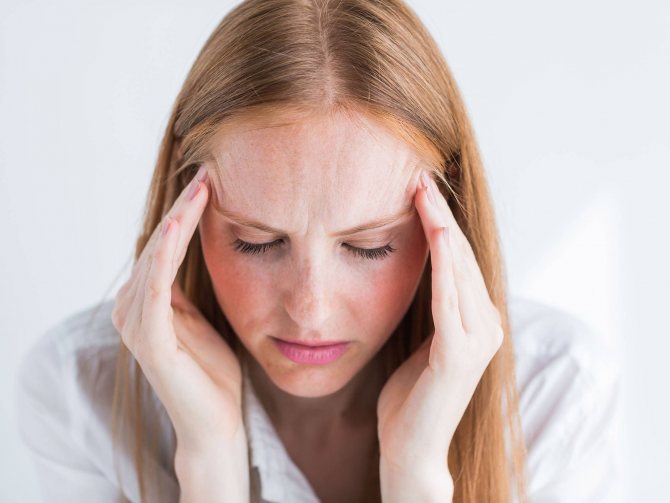
Injections work much faster and more effectively than tablets. Consequently, groups such as NSAIDs are used, which are part of diclofenac, drotaverine and other drugs. But it is better, in case of terrible pain that is not relieved by pills, to consult a doctor.
Cluster headache
Symptoms : palpable pain in the head, which begins in the area around the eyes and spreads to the temples. An attack of cluster pain can last from half an hour to 4 hours.
Possible Cause : This type of pain is also known as suicidal pain. He may appear at the same time every day. One eye may become red due to inflammation of the trigeminal nerve. Men suffer from this more often than from migraines. Pain is caused by abnormalities in the hypothalamus, an area of the brain that coordinates the release of various hormones and chemicals. It also affects the regulation of the biological clock.
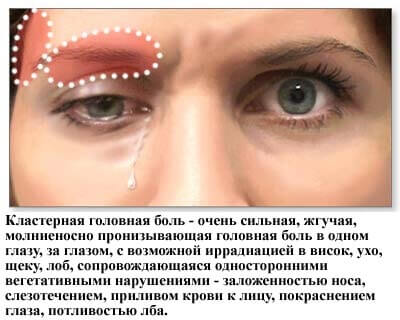
Where is cluster pain located?
Treatment : Your doctor should prescribe medications needed to regulate the blood vessels. If a migraine occurs unexpectedly, you can take these medications for one week, which will also help narrow the blood vessels.
Types of pain, causes and treatment features
A clear division of headache types that all medical organizations would agree on has not yet been achieved. Nevertheless, about 150 species have been identified, more than 10 of which are very common and require special attention. If you know about them, you can save a lot of time and protect yourself from possible negative consequences. The following types of headaches and their possible causes are common.
Tension
The most common type of pain in the world is tension. The second name is “tension pain.” It is studied by modern neuroscience. Almost everyone has encountered such ailment, and it acquired a chronic form in only 3% of cases. It can last from half an hour to a week. In this case, the characteristic of pain is described as squeezing and spreading over the entire head, but often it can be concentrated in only one part of it (occipital, frontal, parietal).
It feels like the muscles in the forehead and eye sockets are too tense. Office workers, drivers and other people whose activities involve a sedentary lifestyle suffer from this problem. It can also be encountered by those who regularly experience psycho-emotional stress.
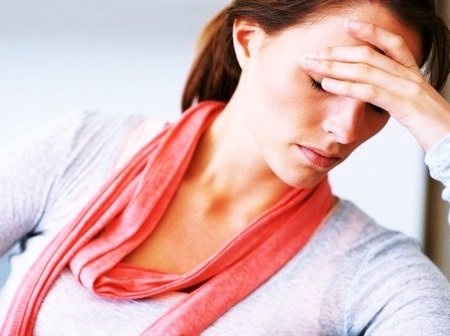
Determining the cause of such pain is very difficult. As a rule, doctors leave this point without special attention, because... The problem is almost always stress and low activity. Occasionally, the cause is injury to the muscles of the neck or head, cervical osteochondrosis, intoxication and VSD.
The fight against such a disease requires a full examination. If no injuries have been identified, then the patient can only adjust his lifestyle by increasing the level of physical activity and reducing the amount of stress experienced. Additionally, you can undergo a course of manual therapy, which can have a positive effect. For prolonged pain, you can take regular painkillers for the head.
Post-traumatic
Any injuries to the head and spine, including even mild bruises, can cause negative consequences in the form of headaches. They can appear immediately, and sometimes even after a year. Localization depends solely on the place that was injured. The sensation of pain can be weak, aching, and sometimes quite sharp. It depends on many factors.
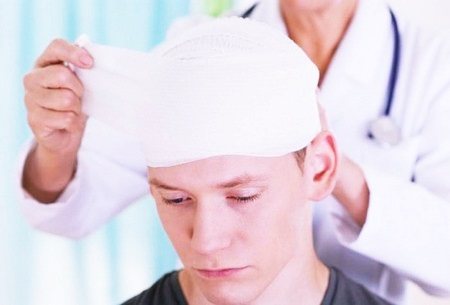
Since the cause is past trauma, there is no need to treat such pain. Often, ordinary physical therapy, an active lifestyle, good sleep, proper nutrition, and regular massage are enough.
If the injury was recently sustained, you should consult a doctor to avoid possible complications.
Migraine
One of the most severe and common types of pain. It is repeated regularly and can last from 2 hours to 3 days. Feels like a pulsation with a constant increase in intensity. Focuses on only one side of the head, intensifies with movement. Symptoms include dizziness, intolerance to light and noise, nausea, heavy sweating, chills, and hypersensitivity of smell. Shortly before an attack, people may experience visual abnormalities in the form of various rings. Women aged 25-35 years are most susceptible to this problem.
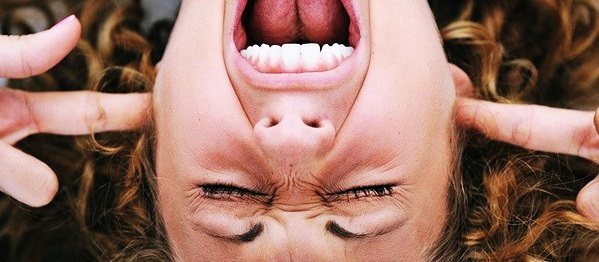
The causes of migraine are still unknown. Long-term studies have shown that malaise is associated with impaired brain function and is completely independent of the patient’s mental state. It is noted that during attacks, the vessels inside the head dilate, and in parallel with this, electrical activity appears on the cerebral cortex, which is not the norm.
Migraine-like pain often occurs with anemia. However, they can spread to any part of the head.
Some patients experience another attack after contact with one specific external irritant (smell, sound, smoke, etc.). It is recommended to make every effort to determine what is causing the problem, and to avoid contact with the “dangerous” object in the future. This disease cannot be completely cured, but a pathogenetic method of treatment is used, for which medications (triptans) are prescribed, which over time begin to show less and less effectiveness, which is associated with addiction. During attacks, it is important to create the most calm and comfortable conditions for the person.
Sinus
This type of pain is also very unpleasant. Its location is the area of the cheekbones, forehead or bridge of the nose. The sensations last a long time and are accompanied by nasal congestion, fever, and severe swelling of the face. During the attack, the sensations do not change and persist with any action.
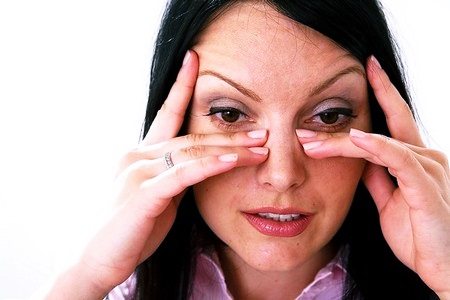
The cause of the phenomenon, as a rule, is inflammation of the nasal sinuses. This is exactly the kind of pain one encounters with sinusitis. Treatment procedures should be aimed specifically at eliminating the inflammatory process. These may include regular pills, daily injections, or specific treatments, including surgery.
Cluster
Those who experience cluster pain experience the most severe pain. The attacks are short-lived, from 15 minutes to an hour and a half, but can be repeated many times over the course of a day, and sometimes even several days. As a rule, pain is concentrated on one side of the forehead near the eye. In this case, a pulsation is felt, which may be accompanied by redness of the eyes, runny nose, lacrimation, and a rush of blood to the brain. It can appear at the same time of day at regular intervals (from once a week to once every six months). In special cases, the severity of the pain can reach such a level that the patient can neither speak nor move, and brain activity is sharply reduced. As a rule, men suffer from such pain.
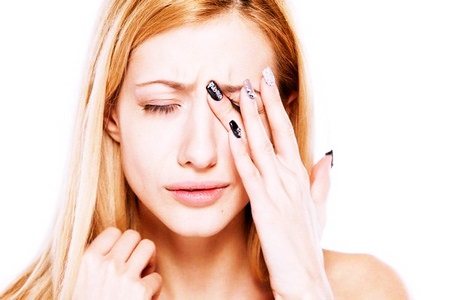
The reasons for their appearance are unknown. A large number of studies have not been able to identify what causes this problem in people. It is impossible to cure a person with such symptoms.
In extreme cases, when attacks last for several hours, doctors may use oxygen therapy or prescribe drug injections.
Infectious
The nature of an infectious headache can be completely different. It all depends on the type of infection. If a child or adult is infected with ARVI or influenza, the pain will not be severe and will be concentrated in the forehead, temples or eye sockets. With more serious infections, the pain can be very severe and throbbing. For example, this is how meningitis manifests itself. Additional symptoms may include runny nose, cough, high fever, vomiting, blurred vision and many others, corresponding to one specific infection that the patient is experiencing.
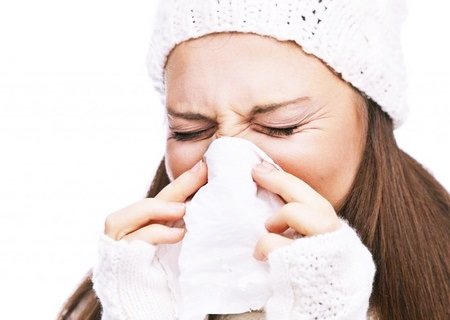
In such situations, it is necessary to get rid of the infection. They are treated differently. In mild cases, bed rest and strong tea with lemon are sufficient, but in severe cases, the patient may require urgent hospitalization with long-term serious treatment.
Hypertensive
Painful sensations can appear over the entire surface of the head, and in some cases they spread to the area of the eye sockets and the back of the head. A person feels a bursting feeling inside the head, and nausea and light intolerance may appear, as with migraines.
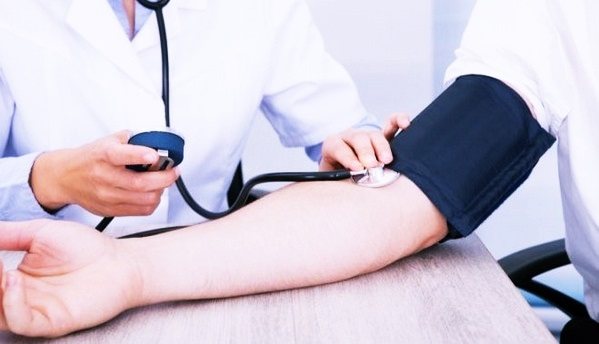
What does a headache of this nature mean? As a rule, it manifests itself with a sharp increase in intracranial pressure. Not only hypertensive patients suffer from this, but also healthy people whose blood pressure levels have increased for some reason. It can also be encountered after injury, pregnancy, or childbirth.
It is the blood pressure problem that needs to be treated. To do this, doctors prescribe special medications that lower it, as well as vitamins that help strengthen the entire body as a whole. Hypertension will gradually disappear, but may reappear in the future.
With low blood pressure, you may also experience a headache, but very mildly.
Hormonal
Feelings of an ambiguous nature may occur during the restructuring of hormones. As a rule, women face this. The pain can be of varying degrees of intensity, but is concentrated either in the upper part of the head or temples, or spreads everywhere at once.
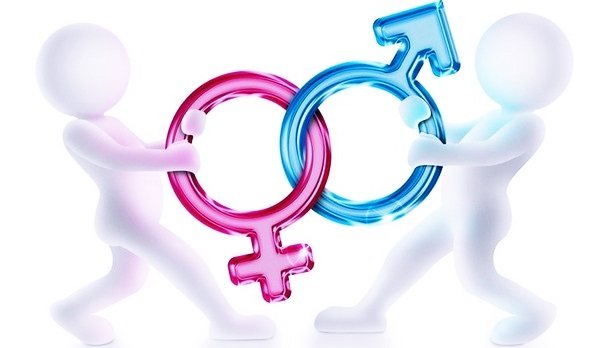
The reason is due to normal changes in hormonal levels. This often occurs during menstruation, pregnancy, menopause, or taking strong medications that affect hormones. This situation does not require any medical intervention.
Tumor
The pain may only appear in the morning and be accompanied by severe vomiting. At first the manifestations are periodic, but over time the frequency and their strength increases. In parallel with this, convulsive seizures may appear, weight loss may drop sharply for no particular reason, and the psyche may change.
Their origin lies in the increase in pressure, which is caused by the development of a tumor. It puts pressure on parts of the brain, which slows blood circulation. The larger the tumor grows, the more severe the symptoms become.
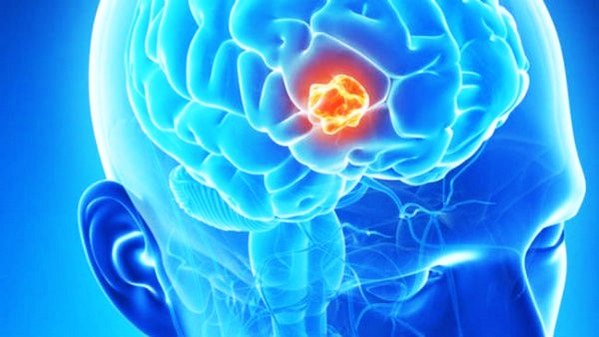
The method of treating tumors is always individual. If it is benign and there is no cause for concern, then weak drugs may be prescribed. However, in severe situations, the only hope is surgical intervention.
Caused by intracranial bleeding
The pain begins suddenly, gradually increases, and is accompanied by significant impairments in visual acuity, speech apparatus, coordination, as well as nausea and personality disorder. The areas of such a headache can be different, including the temples, forehead, back of the head, crown, and entire face.
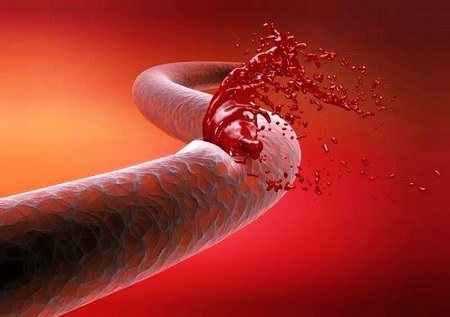
They may indicate a ruptured vessel. This can happen due to injury, an aneurysm, or severe thinning of the walls. It may take several hours after the rupture before bleeding begins.
Similar symptoms can be caused by a stroke or epilepsy. However, they may vary depending on the nature of the problem.
Urgent medical intervention is necessary. Surgical removal of blood from the skull will be required to prevent brain cells from being damaged. Immediately after this, the root cause of the bleeding is determined and special measures are taken to stop it. The patient will require hospitalization, long-term drug therapy, and lifestyle changes. Therefore, you should call an ambulance as soon as possible.
Related to trigeminal nerve injury
Short (5-10 seconds) pain, characterized by extremely severe severity, can appear not only in the head, but also on the face when eating or talking. As a rule, no other symptoms are observed.
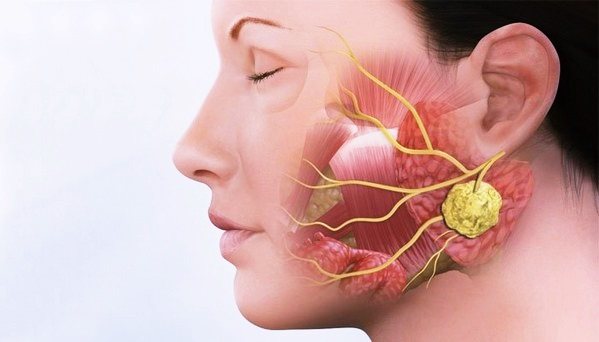
These are signs of damage to the trigeminal nerve. This can happen from caries, stomatitis, sinusitis or malocclusion. Treatment should be aimed at eliminating the original source, which may require medication or even surgery.
Secondary
Most doctors tend to distinguish secondary headaches as a separate type. They refer to rare situations that do not require treatment and cause unpleasant sensations in the head. Most often these include the following types of headaches and their special treatment:
- Poisoning. It can be caused by poor quality food, alcohol, poisons and toxins. It is treated by taking absorbents, painkillers, and stomach cleansing drugs.
- Taking medications. Many medications cause side effects in the form of pain in the head. To eliminate the problem, you need to stop taking the medications.
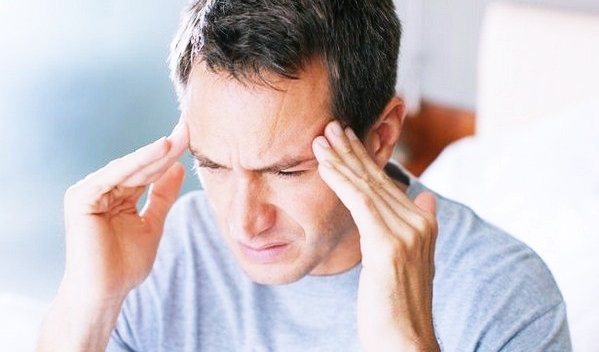
This can include many other types of ailments, if they do not belong to those listed above.
Headache due to brain tumor
Symptoms . With brain tumors, pain in the head increases in the evening or morning, and then gradually decreases. Painful symptoms from an intracranial tumor are aggravated by coughing, sneezing or physical activity, since under these conditions the pressure in the skull increases even more.
The next signs of a tumor are nausea and vomiting. These symptoms usually occur after physical activity or when changing body position. The appearance of painful attacks, which is very typical for brain tumors. Some people may complain of muscle spasms, twitching, or sudden involuntary movements of an arm or leg. In addition, loss of consciousness is possible.
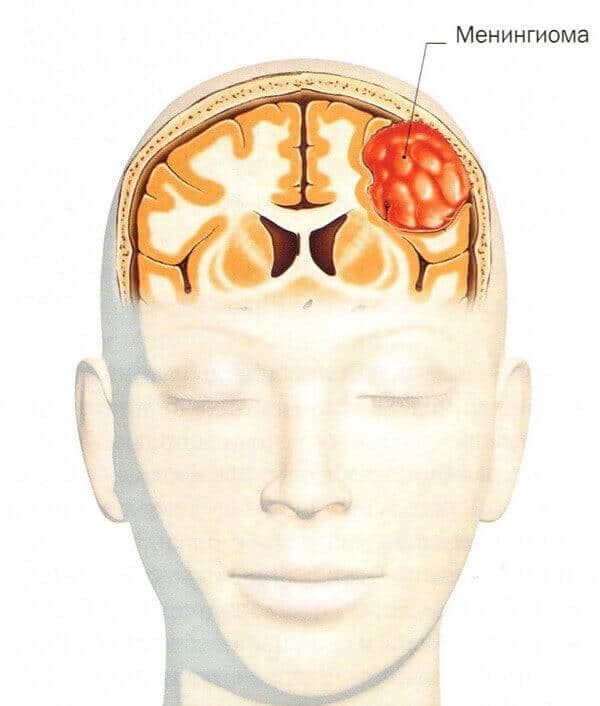
A brain tumor
Reason . Since the brain is located in a limited space and if there is a tumor in it, it begins to increase in size and put pressure on nearby structures, which leads to an increase in intracranial pressure and, consequently, to the appearance of pain symptoms.
Treatment . If any of these symptoms are present, it does not mean a tumor is present. You should consult your doctor to do further research to clarify your condition and then get a proper diagnosis.
Characteristic
Pain varies in origin, location, nature, duration, and distribution. These characteristics make it possible to clearly describe them, make a diagnosis and, if the results of objective studies are also available, determine how to treat the corresponding pathology.
Origin
Speaking about the types of pain in the head, it should be noted that they are primary and secondary. Primary ones occur on their own and are not caused by another disease. Secondary ones appear as a consequence of other diseases, for example, hypertension.
Localization
Headache is divided into areas of the head depending on the location of the lesion. So, they talk about pain in the forehead, temples, crown, and back of the head. If tissue swelling or hematoma is localized in the frontal part, the pain will be concentrated here.
Pain may appear on only one side. This is typical for the initial stages of cancer, with injuries, vascular lesions, and neuralgia.
With the development of the disease, with multiple brain lesions, painful sensations spread throughout the head. It becomes impossible to clearly describe the localization. Such manifestations are characteristic of the advanced stage of osteochondrosis, hypertension, tension pain, and migraine.
Character
The description of pain includes characteristics such as:
- compressive;
- pressing;
- pulsating;
- non-pulsating;
- cutting;
- acute;
- stupid.
Intensity
The pain is described as mild, moderate, or severe. Mild usually does not create much discomfort and does not cause physical reactions in the patient. Moderate pain can be tolerated without the use of painkillers and antispasmodics. It is annoying, but the person most often continues to go to work and study. With severe pain, all activities are blocked. It is so intense and heavy that all thoughts are aimed only at getting rid of it.
Sometimes, in order to characterize sensations, patients with chronic pathologies are asked to use a scale from 1 to 5 or to 10. Each digital indicator corresponds to the strength of pain. Cancer patients sometimes use a scale of medications, each of which serves as a kind of pain assessment.
Duration
Soreness can be episodic, for example, with tension and fatigue. It can be long lasting, lasting several hours or days.
It acquires this character in the last stages of cancer. In this case, its intensity is only temporarily lost.
Spreading
From the point of view of distribution, they speak of paroxysmal pain, which occurs only for a few seconds or minutes, and spreading, continuous. Paroxysmal character is noted with neuralgia and cluster pain. Continuous – for meningitis.
Triggers
An important characteristic is the pain trigger. Pay attention to when they arose. With increased intracranial pressure, malignant neoplasms, sinusitis, dropsy, the pain is most intense immediately after waking up or being in a horizontal position for a long time.
With hypertension, it increases in a noisy environment, in the heat, in the afternoon. Neuralgia is aggravated by exposure to trigger points.
Symptoms
Symptoms accompanying pain play an important role in diagnosis. Nausea, photosensitivity, sound intolerance, and dizziness are usually noted.
They talk about vomiting, convulsions, pressure surges, imbalance, numbness of part of the face and limbs. The combination of signs allows us to make a preliminary conclusion about the pathology and its causes.
Headache due to occipital neuralgia
Symptoms . Headache is the most important symptom. Most patients also experience pain in the cervical spine, occipital and temporal regions. It can be unilateral or bilateral. The pain syndrome often moves throughout the head, sometimes reaching the forehead. There may be some symptoms that are common to headaches and other types of migraines, including sensitivity to light or sound, nausea and vomiting.
Article on the topic: 15 main reasons why the back of the head burns
The cause of neuralgia is poorly understood. It is believed that there is a problem with the trigeminal nerve when it is irritated or inflamed. There are many different causes of trigeminal nerve irritation, including stroke or neck muscle injury, muscle spasm, cervical osteochondrosis, arthritis, or other structural changes in the upper spine. The problem may be associated with some other dangerous diseases, such as diabetes, infection or vascular disorders.
Occipital neuralgia
Treatment of trigeminal neuralgia relieves pain syndromes. To do this, it is recommended to keep your neck warm and use warming ointments. The following medications are prescribed:
- anti-inflammatory analgesics: Diclofenac, Ibuprofen;
- muscle relaxants: Baclofen, Mydocalm, Sirdalud.
For additional muscle relaxation, therapeutic massage is prescribed. At home, you can use special neck massagers.
For unbearable pain, blockade is often treated with steroidal anti-inflammatory drugs. In cases where treatment does not have the desired effect or the frequency of neuralgia increases, surgery is prescribed.
Diagnostics
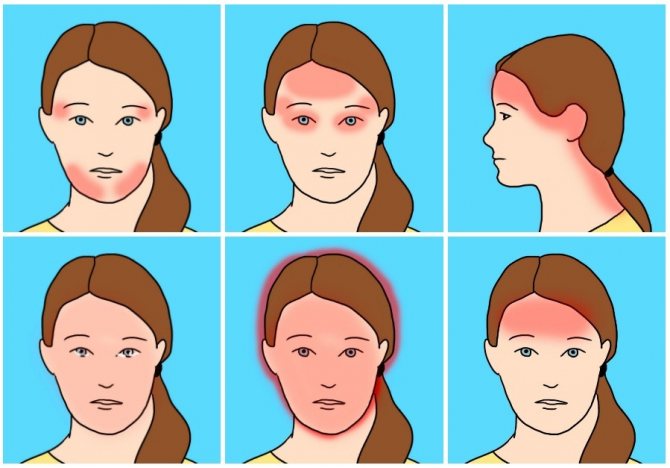
Laboratory types of research. After hospitalization, the patient is prescribed a blood and urine test, where the detected leukocytosis (increased number of white blood cells) indicates the presence of inflammation, and after that it is determined which area is affected.
Computed tomography allows you to assess the condition of the blood vessels in the brain. The photograph obtained as a result of the study displays the affected areas of the brain, thereby identifying tumors.
How is the root cause of a headache diagnosed? When chronic cephalgia limits a person and prevents him from performing normal duties, one cannot hesitate. You need to go to a neurologist and undergo a full examination according to his direction. As a rule, the following studies are prescribed:
- CT scan.
- Echoencephalogram of the brain.
- Study of the vascular system of the brain.
To establish hypertension, you also need to see an ophthalmologist and have a bone marrow puncture. If there is a lot of cerebrospinal fluid and the brain tissue is compressed, this will be visible in the pupils of the eyes.
When suspicion falls on osteochondrosis, a neurologist should give an opinion. First of all, it is necessary to establish what types of headaches bother the patient, and their treatment should begin only after diagnosis.
Without this, you cannot start therapy with pills or injections.
Pain that is wandering in nature requires mandatory medical diagnosis for the presence of serious brain diseases. During the examination, the doctor prescribes the following mandatory examinations:
- magnetic resonance imaging of the brain;
- echoencephalography;
- computed tomography of cerebral vessels;
- Doppler ultrasound;
- electroencephalography;
- craniography.
Therapy is prescribed in accordance with the established diagnosis.
Therapy for wandering pain in the head depends on the type and severity of the disease and provoking factors, for example, the age of the patient.
Features of the manifestation of diseases allow the doctor to make a preliminary diagnosis. Then various research methods are used to confirm or refute suspicions. Only after this is a treatment regimen developed, aimed not at cephalgia, but at its cause.
Diagnosis of headache may include the following measures:
- MRI and/or CT;
- Ultrasound of the vessels of the brain and neck;
- EEG, REG;
- X-ray of the head and neck;
- Lumbar puncture.
General and biochemical blood tests are mandatory. They help evaluate the composition of biological material, its viscosity, cholesterol level, and eliminate the presence of infection in the body.
For effective treatment, the patient must undergo diagnostics. If a structural disorder of the central nervous system is suspected, CT or MRI is performed.
Rarely, a head x-ray and an electroencephalogram are prescribed. From the resulting image, the doctor will be able to identify the pathology.
Prevention of the disease consists of regular walks in the fresh air, proper nutrition and healthy sleep. You cannot stay in one position for a long time, which causes tension in the neck muscles.

Do exercises regularly to strengthen the muscles of the back and neck. It is necessary to avoid stress and maintain good posture.
If headaches are caused by muscle tension, then it is recommended to engage in running and fitness. To eliminate vascular headaches, it is necessary to take appropriate medications. For hypertension, salty and fatty foods and carbohydrates are excluded from the diet.
